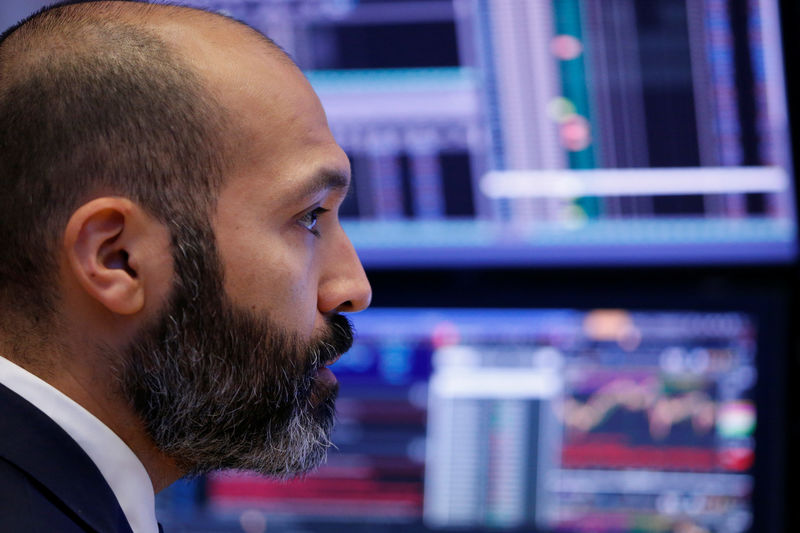SHANGHAI (Reuters) – China’s SAIC Motor plans to cut thousands of jobs this year at its joint ventures with General Motors (NYSE:) and Volkswagen (ETR:), as well as its electric vehicle plant, two people familiar with the matter told Reuters. situation
The state-owned automaker is looking to cut 30% of its workforce at SAIC-GM, 10% at SAIC Volkswagen and more than half at its subsidiary Rising Auto EV, the sources said.
Large-scale workforce cuts at state-owned Chinese firms are rare and come amid a bitter auto price war as the country’s economy falters. The cuts also reflect the explosive growth of electric vehicles in China, a sector where SAIC and its foreign partners have rapidly lost market share to Tesla (NASDAQ:) and private Chinese automakers led by BYD (SZ:).
According to sources, staff reductions will not happen immediately in the form of mass layoffs, but are planned for 2024. Much of it will be achieved by imposing stricter performance standards and offering benefits to lower-ranked employees who resign, they say.
A SAIC spokesman said Reuters “speculation” about workforce cuts was “not true” and that the company would not set layoff targets. SAIC did not respond to questions about efforts to force underperforming employees to resign or other downsizing strategies.
The company added that it hired 2,000 employees in the first two months of 2024 to focus on software and new energy vehicles.
A GM China spokesman said it was “inaccurate” to say SAIC-GM was “cutting its workforce by 30%” but declined to go into detail. A VW China Group spokesman said the company has no plans for “layoffs” and that it is “incorrect” to say SAIC-VW plans to cut 10% of its workforce.
A VW spokesman declined to comment on whether the company had changed its employee performance reviews, but called them a “long-term mechanism” and said SAIC-VW provides advice and resources aimed at ensuring “each employee can be qualified for their job requirements.” Falling sales SAIC has been China’s largest automaker for nearly two decades, but its sales fell 16% in the first two months of 2024 from a year earlier, according to an SAIC report. The parent company and major subsidiaries employed 207,000 people at the end of 2023, according to SAIC’s annual report.
One of the sources said most of the cuts at SAIC-VW would come from payouts offered to retiring low-performing workers. SAIC rates workers on a scale from A to D. In the past, the company has rarely given ratings of C or D. But in 2023, about 10% of SAIC-VW employees received lower ratings, one of the sources said. Employees with a D rating are being offered severance pay, while those with a C rating are being put in “uncomfortable positions” designed to encourage attrition, the source said. SAIC-VW’s 10% job cut target is for white-collar workers, not factory workers, the source said. Such performance-based payments are also used at SAIC-GM, the source said. Reuters could not determine how widely the strategy is being used at the GM joint venture, what other methods of cutting staff it might use or whether factory workers are included in its target of 30% job cuts. Rising Auto, one of SAIC’s two EV units, is also offering payouts to low-rated employees but will also lay off some workers and not renew the contracts of others, one of the people said.
LEFT IN THE DUST
The job cuts are a symptom of much larger problems for state-owned automakers and their foreign partners in the world’s largest auto market. SAIC Volkswagen was founded in 1985 and today produces, among other things, the ID.3 electric car and cars under the Audi brand. SAIC-GM was founded in 1997 and produces Chevrolet, Buick and Cadillac vehicles. But SAIC and its overseas partners have seen sales plummet in recent years as BYD and Tesla have pulled ahead in the race for EV market share. Sales of electric vehicles have surged and now account for 23% of vehicle sales in China, with BYD and Tesla holding the largest share in the electric power sector.
The Chinese government has granted Tesla a rare exception to its longstanding practice of forming joint ventures with state-owned enterprises of foreign automakers. In 2018, Tesla created a wholly owned facility to produce cars at its Shanghai plant – the world’s largest by output – as part of a government strategy to accelerate the development of electric vehicle supply chains in China and encourage domestic automakers to compete.
BYD answered the call. Electric vehicle sales in China soared from about 130,000 in 2020 to more than 1.5 million last year, and global EV sales surpassed Tesla late last year. Last week, BYD Chairman Wang Chuanfu predicted that foreign brands’ market share in China would fall from 40% to 10% in the next three to five years.
As the industry’s electrification accelerates, the Chinese government has called on state-owned enterprises to be more efficient and less dependent on foreign partners. But SAIC still relies on partnerships with VW and GM for most of its sales and profits.


